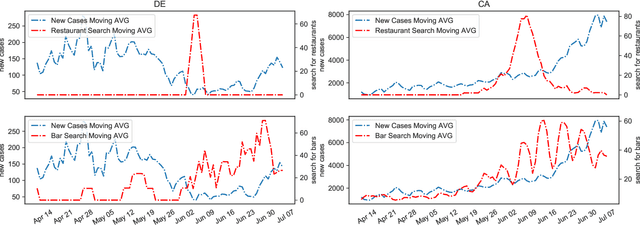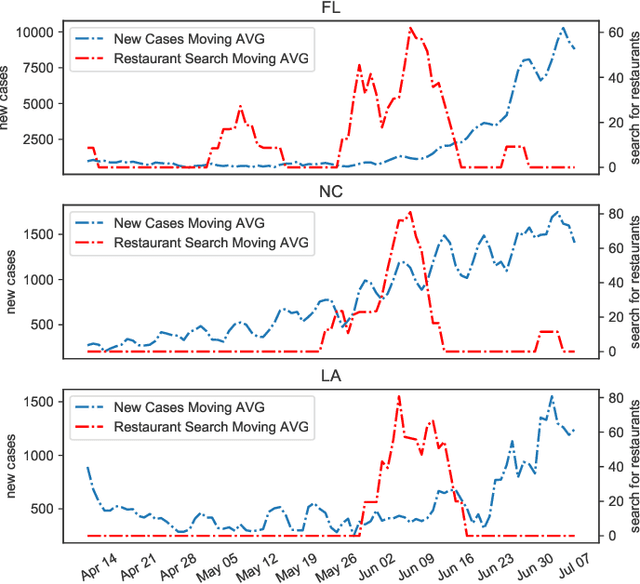The Causality Inference of Public Interest in Restaurants and Bars on COVID-19 Daily Cases in the US: A Google Trends Analysis
Paper and Code
Jul 27, 2020



The COVID-19 coronavirus pandemic has affected virtually every region of the globe. At the time of conducting this study, the number of daily cases in the United States is more than any other country, and the trend is increasing in most of its states. Google trends provide public interest in various topics during different periods. Analyzing these trends using data mining methods might provide useful insights and observations regarding the COVID-19 outbreak. The objective of this study was to consider the predictive ability of different search terms (i.e., bars and restaurants) with regards to the increase of daily cases in the US. We considered the causation of two different search query trends, namely restaurant and bars, on daily positive cases in top-10 states/territories of the United States with the highest and lowest daily new positive cases. In addition, to measure the linear relation of different trends, we used Pearson correlation. Our results showed for states/territories with higher numbers of daily cases, the historical trends in search queries related to bars and restaurants, which mainly happened after re-opening, significantly affect the daily new cases, on average. California, for example, had most searches for restaurants on June 7th, 2020, which affected the number of new cases within two weeks after the peak with the P-value of .004 for Granger's causality test. Although a limited number of search queries were considered, Google search trends for restaurants and bars showed a significant effect on daily new cases for regions with higher numbers of daily new cases in the United States. We showed that such influential search trends could be used as additional information for prediction tasks in new cases of each region. This prediction can help healthcare leaders manage and control the impact of COVID-19 outbreaks on society and be prepared for the outcomes.
 Add to Chrome
Add to Chrome Add to Firefox
Add to Firefox Add to Edge
Add to Edge